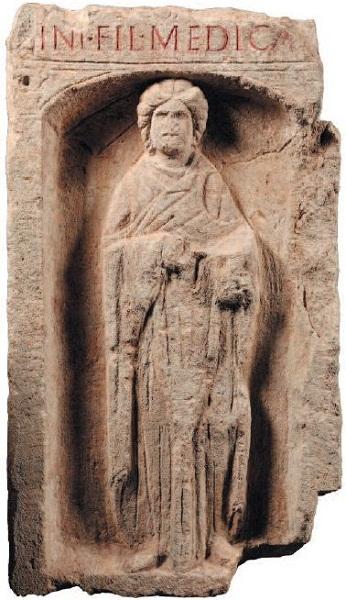Review
Physician of recognized prestige who practiced her profession around 100 B.C. in the same way as her male colleagues, treating both women and men and practicing the medicine of her time at a high level. Her contributions in the medical and pharmacological field earned her the respect of her fellow professionals, who recognized her and cited her as an authority on the subject. Her reputation survived over time. She played a prominent public role in her hometown.
Activities
Justifications
- Physician of recognized prestige for her contributions to the field of medicine. Her colleagues recognized her and cited her as an authority on the matter.
- She practised in the Hippocratic tradition treating both men and women.
- She had a prominent public role in his hometown.
Biography
Antiochis lived in the 1st century BC. C. in Tlos, a city that was in the Roman province of Lycia and Pamphylia, south of present-day Turkey. The little that we know about her comes from a text inscribed on a statue base that she dedicated to herself in her hometown and from information provided in two of her books by Galen of Pergamum, the great physician of the imperial era. Both sources […] coincide in transmitting the image of a woman who acquired a position of respect thanks to the practice of medicine.
Antiochis was the daughter of Diodotos of Tlos, a physician quoted by Dioscorides in his work On Medicinal Matter. It is very possible that she was educated in the art of medicine by her father, following the custom of transmitting and maintaining iatric knowledge within the family circle. Over time, she independently developed these abilities. The text inscribed on the base of her statue indicates the public notoriety she enjoyed, as she had received recognition from the Council and the people for her expertise in the art of medicine. ("Antiochis of Tlos, daughter of Diodotus, praised by the council and people of Tlos for her expertise in the art of healing, has erected this statue of herself"). The fame that she had of her in her homeland of origin was extended to her professional colleagues in different places and times. Antiochis is not only one of the few women that Galen mentions in his work, but she is the one he quotes on most occasions. In one of them, she does it to reproduce the recipe for a medicine that this woman had invented, and which was indicated to cure diseases of the spleen, dropsy, sciatica, and arthritis. The usefulness of the recipe is endorsed by Asclepiades of Bithynia, a famous doctor established in Rome and a contemporary of Antiochus, of whom we know that he used this remedy to cure his patients. Another famous physician of the time, the empirical Heraclides of Taranto, dedicated several of his treatises to Antiochus on the most diverse clinical issues. Its medical activity was not limited to female illnesses but was applied to ailments shared by women and men.[...] It is an example of how, in Roman times, women could get involved in healthcare activities in fields other than gynecology and obstetrics.[…]
María de los Ángeles Alonso. “Antioquis”, 250 mujeres de la Antigua Roma.
Bibliography
-Alonso Alonso, María de los Ángeles (2011). “Medicae y obstetrices en la epigrafía latina del Imperio romano. Apuntes en torno a un análisis comparativo”, Classica & Christiana, Nº 6, 2 pp. 267-296.
-Alonso, María de los Ángeles (2022). “Antioquis”, 250 mujeres de la Antigua Roma, Sevilla: ed. Pilar Pavón.
-Dimopoulou, Athina (2001). “Medica, obstetrix, nutrix: les femmes dans les métiers médicaux et paramédicaux dans l’Antiquité grecque et romaine”, Saitabi, pp. 273-287.
-Moral Lozano, Maria de la Sierra (2011). “Mujer y medicina en la Antigüedad clásica: la figura de la partera y los inicios de la ginecología occidental,” Fronteiras: Revista de História, vol. 13, Nº 24, Universidade Federal da Grande Dourados, pp. 45-60.
-Pavón, Pilar (dir.), (2022). “Exposición Virtual: 250 mujeres de la antigua Roma” en Conditio feminae I: Marginación y visibilidad de la mujer en el Imperio Romano. Universidad de Sevilla, (retrieved on 10/11/2022), <https://grupo.us.es/conditiofeminae/index.php/2022/03/02/44-antioquis/>
Didactic approach
-CUC: Block Classical roots of today's world. Everyday life; Block Continuity of cultural heritage. Literature, art and science.
-Latin 4th ESO: Legacy and heritage block.
-Latin Baccalaureate: Legacy and heritage block.
-History 1st ESO: Societies and territories block, referring to Rome.
Documents
